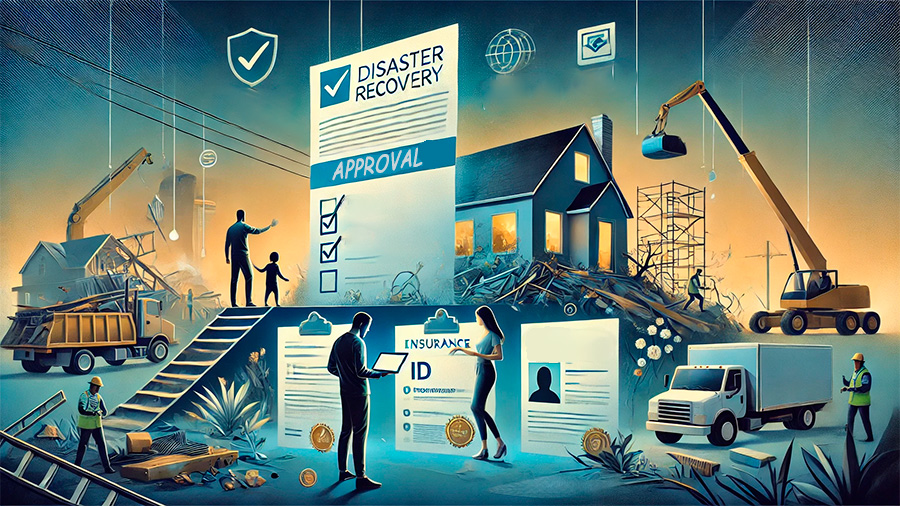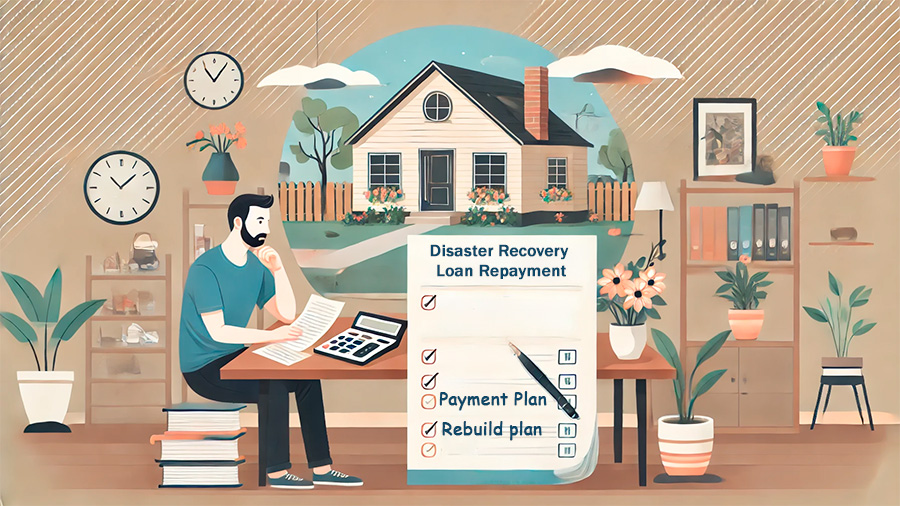Natural disasters such as hurricanes, floods, wildfires, and tornadoes can leave homeowners devastated, both emotionally and financially. In the wake of such events, many find themselves in need of financial assistance to rebuild their homes and restore their lives. Disaster recovery loans, provided by federal and state agencies, offer crucial support during these challenging times. This guide will help homeowners understand how disaster recovery loans work, how to apply for them, and the best ways to navigate the process to ensure a smooth recovery.
What Are Disaster Recovery Loans?
Disaster recovery loans are financial assistance programs designed to help homeowners repair or rebuild their properties after natural disasters. These loans are typically offered by government agencies, such as the U.S. Small Business Administration (SBA) and the Federal Emergency Management Agency (FEMA). They are intended to cover the costs of property damage not fully covered by insurance, allowing homeowners to restore their homes and recover more quickly.
1. Types of Disaster Recovery Loans
There are two primary types of disaster recovery loans available to homeowners:
Home Disaster Loans (SBA Loans):
- Purpose: These loans are designed to help homeowners repair or replace their damaged or destroyed homes, as well as cover the costs of furniture, appliances, and personal property.
- Eligibility: Available to homeowners who have experienced damage due to a declared disaster, with priority given to those who do not have sufficient insurance coverage.
- Loan Terms: Home Disaster Loans typically offer low-interest rates, long repayment periods, and flexible terms, depending on the level of damage and the applicant’s financial situation.
FEMA Individual Assistance (IA) Program:
- Purpose: FEMA provides grants through the IA program to help with temporary housing costs, home repairs, and other disaster-related expenses.
- Eligibility: Available to individuals and households that meet certain income criteria and have experienced damage or loss in a federally declared disaster area.
- Grant vs. Loan: Unlike disaster loans, FEMA IA grants are not required to be repaid but are usually smaller amounts meant for immediate needs, such as temporary housing and emergency repairs.

How to Apply for Disaster Recovery Loans
Applying for a disaster recovery loan can be a straightforward process if you follow the necessary steps and have all the required documentation. While each agency and loan type may have its specific requirements, the general application process remains consistent.
1. Assess Your Eligibility
Before applying for a disaster recovery loan, ensure you meet the eligibility requirements set by the loan provider. For SBA loans, eligibility is typically based on the extent of damage, your insurance coverage, and your ability to repay the loan. FEMA grants, on the other hand, are available to homeowners in disaster areas, and eligibility is determined by income levels and the severity of damage.
Eligibility checklist:
- Ensure the disaster is federally declared for your area.
- Assess the damage to your home and personal property.
- Check if your insurance coverage is sufficient to cover the damage.
- Determine your ability to repay the loan based on your financial situation.
2. Gather Required Documentation
When applying for disaster recovery loans, be prepared to provide the necessary documentation to prove the extent of damage to your property and your ability to repay the loan. This documentation typically includes:
Essential documents for disaster loan applications:
- Proof of identity: Valid government-issued ID and Social Security number.
- Insurance information: Insurance policies and claims that outline your coverage and the damage to your property.
- Damage assessment: Reports from contractors, appraisers, or insurance adjusters that detail the damage to your home and the estimated repair costs.
- Financial documents: Proof of income, tax returns, bank statements, and other financial records to demonstrate your ability to repay the loan.
3. Submit Your Application
Once you have all your documentation, you can begin the application process. For SBA loans, applications can be submitted online via the SBA website, through the Disaster Loan Assistance portal, or by visiting a local SBA Disaster Recovery Center. FEMA applications can be made online, over the phone, or through the FEMA mobile app.
Steps for submitting your application:
- SBA application: Visit the SBA website or call their disaster assistance center to begin the application process. You can apply for a loan up to the maximum amount allowed based on the damage assessment.
- FEMA application: Apply for grants through the FEMA website or by calling their disaster assistance hotline. Be prepared to answer questions about your property damage and personal situation.
- Tracking your application: After submitting your application, you will receive a confirmation number. Use this number to track your application’s progress and communicate with SBA or FEMA representatives if needed.
4. Wait for Approval and Loan Offer
Once your application is submitted, the SBA or FEMA will review your documentation and determine your eligibility for disaster assistance. For SBA loans, you may be contacted for additional information or clarification, and your application will be processed accordingly.
What to expect during the approval process:
- Loan offer: If approved for an SBA loan, you will receive a loan offer detailing the amount, interest rate, and repayment terms. Review the terms carefully before accepting the loan.
- Disbursement of funds: Once you accept the loan offer, the funds will typically be disbursed in installments as work on repairs or rebuilding progresses.
- FEMA assistance: If applying for FEMA grants, the approval process may be quicker, with funds being disbursed directly to you for temporary housing or home repairs.

Managing Loan Repayment
Once you have received disaster recovery funds, managing repayment is crucial. Disaster recovery loans usually come with low-interest rates and extended repayment periods, but it’s important to understand the terms and stay on top of payments to avoid defaulting.
1. Understanding Loan Terms
SBA disaster recovery loans are often offered with favorable terms, such as low-interest rates and long repayment periods (up to 30 years), depending on the borrower’s ability to repay. However, it is essential to carefully review the loan agreement and understand your financial obligations before accepting the loan.
Key aspects to review:
- Interest rates: SBA loans typically offer interest rates as low as 2.75% for homeowners, depending on the applicant’s financial situation.
- Repayment periods: The loan term can extend up to 30 years, offering manageable monthly payments based on your income and the total loan amount.
- Early repayment: While disaster recovery loans often come with extended repayment terms, some allow for early repayment without penalties, enabling homeowners to pay off the loan sooner if financial circumstances improve.
2. Setting Up a Payment Plan
Once your loan has been disbursed, it’s important to set up a manageable payment plan. Contact your lender to arrange a plan that fits your budget and ensures timely payments. If you encounter financial difficulties, it’s essential to communicate with your lender as they may offer deferment or other options to help you through tough times.
Tips for managing repayment:
- Budgeting: Create a monthly budget that includes your loan repayment, taking into account other essential expenses such as utilities, groceries, and insurance.
- Automatic payments: Consider setting up automatic payments to ensure you never miss a payment, which can help avoid late fees and protect your credit score.
- Communication with lenders: If you experience financial hardship, contact your lender to discuss deferment options or changes to your payment schedule.
Conclusion
Navigating the disaster recovery loan process can seem daunting, but understanding the available resources and steps involved can make the journey easier. Whether you are applying for an SBA loan or FEMA assistance, securing financial help after a natural disaster can provide the capital needed to rebuild your home and restore your life. By following the steps outlined in this guide and staying proactive in managing your loan, you can effectively navigate the disaster recovery process and ensure that you are on the path to long-term recovery.

